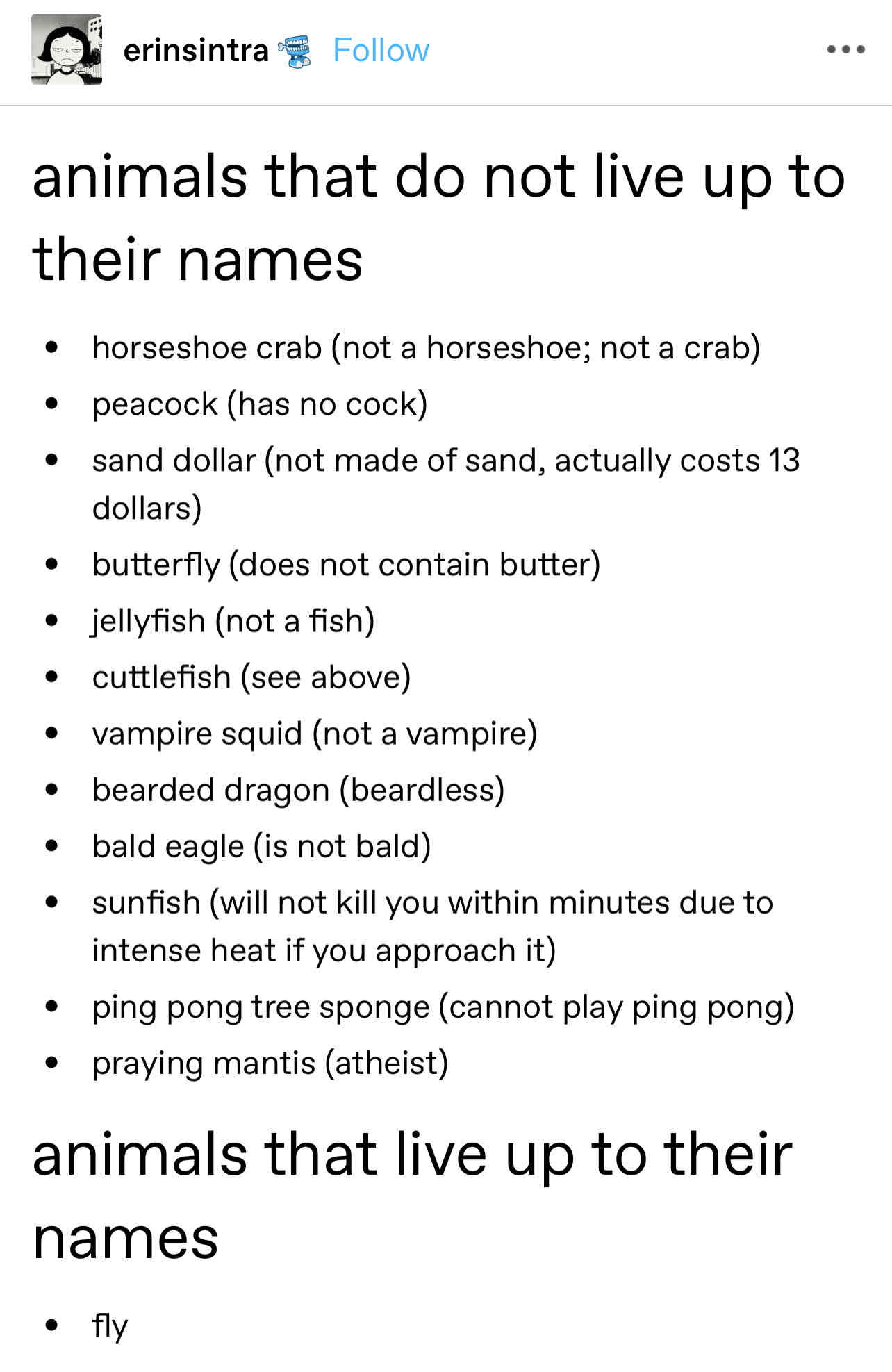What’s in a name?
What’s in a name?


What’s in a name?


Do frogs have gills? The tadpole stage of frogs might be fish, but adult frogs aren't fish.
But, whether or not you want to consider axolotl and frogs fish, "gills" is a neat line that separates humans from trout and sharks.
Sure but what the OP was saying is that these common definitions of fish are paraphyletic. In order to make a monophyletic group including everything we call fish, we'd have to include humans, birds, lizards, etc. And going by the water-and-gills definition, this group would include things we tend not to call fish like crabs, amphibians, sea slugs, some insects... Not to mention that gills have evolved multiple times. And something like a frog being not a fish but it's larvae being fish doesn't make sense for cladistics.
separates humans from trout
I'm a little bit curious about why you specifically selected humans to be differentiated from fish
Because:
There is no sensible phylogenetic definition of “fish” which includes both trout and sharks but not humans.
Gills.
I'll be just as terse
phylogenetic
I admit I don't really know much about that. But Wikipedia says:
In biology, phylogenetics (/ˌfaɪloʊdʒəˈnɛtɪks, -lə-/)[1][2][3] is the study of the evolutionary history and relationships among or within groups of organisms. These relationships are determined by phylogenetic inference methods that focus on observed heritable traits, such as DNA sequences, protein amino acid sequences, or morphology.
Where morphology is:
Morphology is a branch of biology dealing with the study of the form and structure of organisms and their specific structural features.[1]
This includes aspects of the outward appearance (shape, structure, colour, pattern, size), i.e. external morphology (or eidonomy), as well as the form and structure of the internal parts like bones and organs
It sure seems to me like that should cover gills.
Yes, fish would be a morphology that includes gills, fins, streamlined body shape for swimming, etc. But there is no good phylogenetic definition because all the animals we call "fish" do not form a monophyletic group. The monophyletic group encompassing all fish would include also mammals, reptiles including birds, and amphibians because these all have fish ancestors
But there is no good phylogenetic definition because all the animals we call “fish”
The challenge was to come up with a group "which includes both trout and sharks but not humans". It seems like "gills" satisfies that pretty well.
Animals with gills do not form a monophyletic group.